Monday February 24, 2025
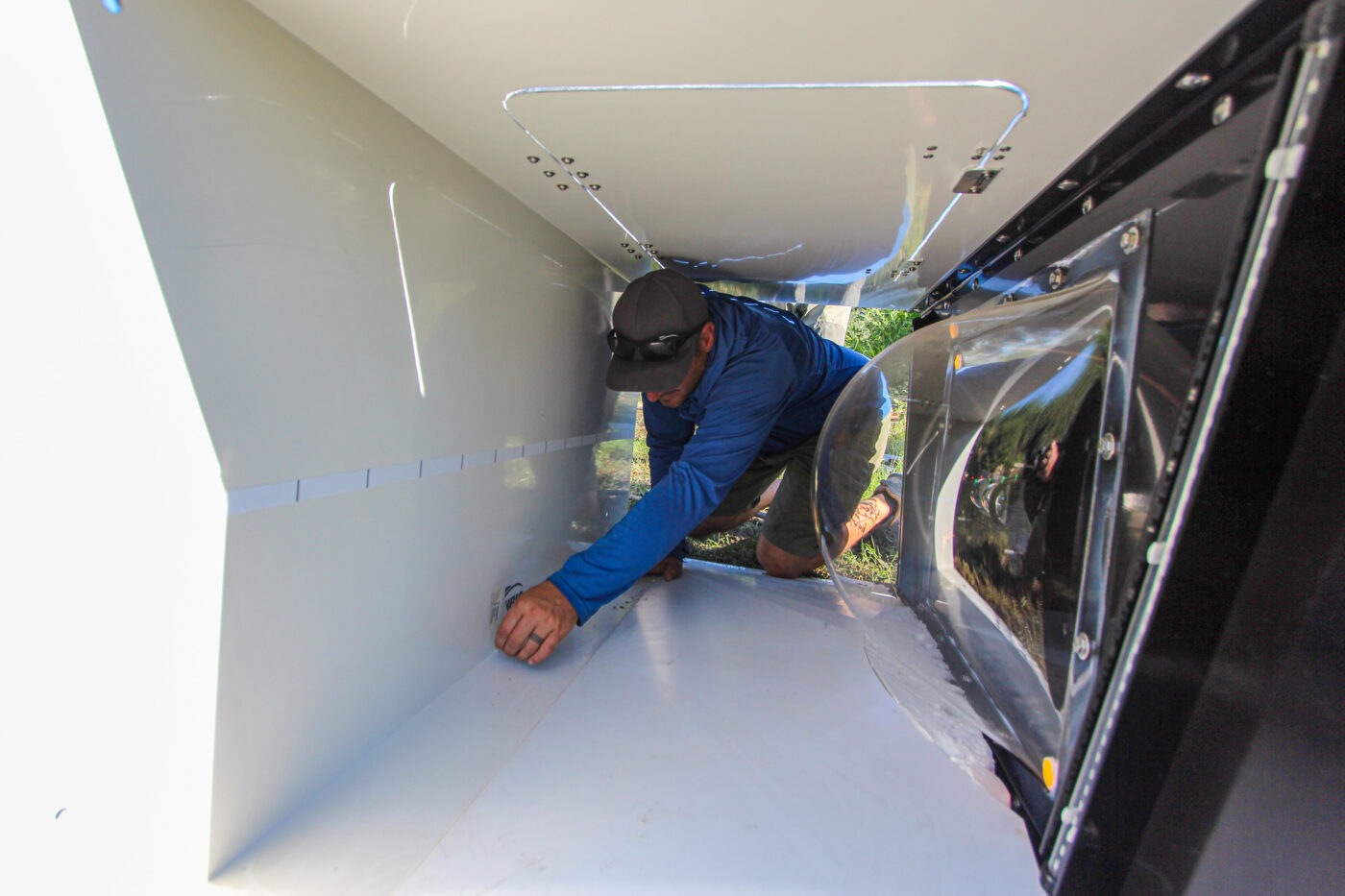
Artificial intelligence (AI) is integrated into evermore tasks, but can it be used to identify and count salmon migrating upstream? Traditionally, counting fish that enter rivers, hatcheries, and fish ladders requires an observer to tally fish as they swim past an underwater viewing window or to generate counts by reviewing footage from fish passage structures captured on video – both time-consuming and tedious endeavors. Technological advancements resulted in sensors and cameras that automatically detect fish, replacing the human observer or drastically reducing the time required to review footage of fish passages. Now, with artificial intelligence and neural network programming, it is possible to use 3D cameras and computer vision (AI that uses images and videos) to automatically identify fish.
FISHBIO recently stepped into the world of AI fish identification with the acquisition of cameras and software from Simsonar, a Finnish company that specializes in automated fish monitoring cameras. Their stereo optic 3D camera system uses two cameras to capture images simultaneously and calculate the depth and length of an object from this dual perspective. The Simsonar Fish Counter (FC) includes a video tunnel, a 3D camera system, and software to automatically measure and – after training the software on the local fish fauna – identify fish to genus or species level.
The system can be installed wherever migrating fish must swim through a designated fish passage structure, such as a weir or fish ladder. The 3D camera is programmed to record a continuous looping video stream for transparency and verification of detections, as well as to record a brief clip when it detects movement, thus capturing a short video of every passing fish. Simsonar’s cloud-based technology allows data to be downloaded and viewed remotely, can be set to automatically send periodic email summaries of passages, and permits checking on the system’s status and functionality from one’s phone or computer.
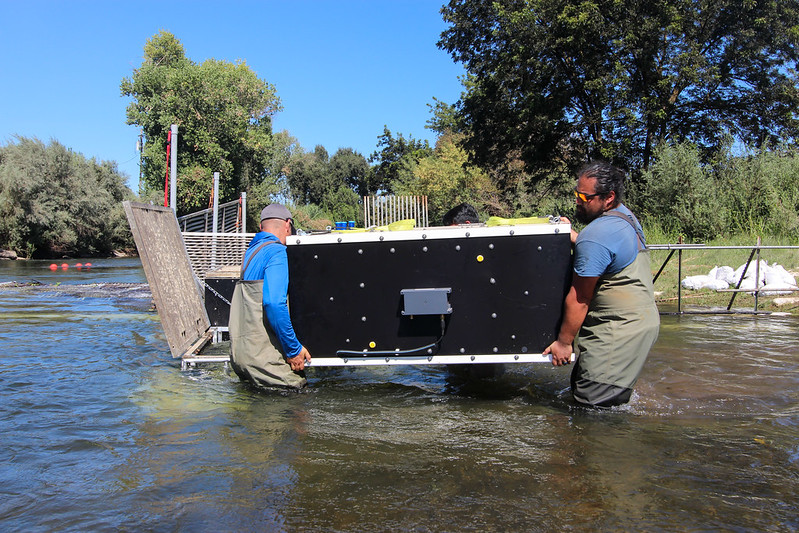
FISHBIO is testing the Simsonar FC in parallel with our existing VAKI Riverwatcher fish monitoring system, which has been in operation at our Tuolumne River weir since 2009. The Riverwatcher system uses a camera and infrared scanners to record videos and silhouettes of each fish, which are then reviewed by a technician to identify fish. The Riverwatcher can record infrared silhouettes and length measurements even in very turbid water, and it rarely misses fish because any object entering the fish passage will trigger the infrared scanners. However, this means that debris and vegetation are also recorded, requiring technicians to review and sort through clips that aren’t relevant (a semi-automatic fish identification software is available from VAKI to assist with this task).
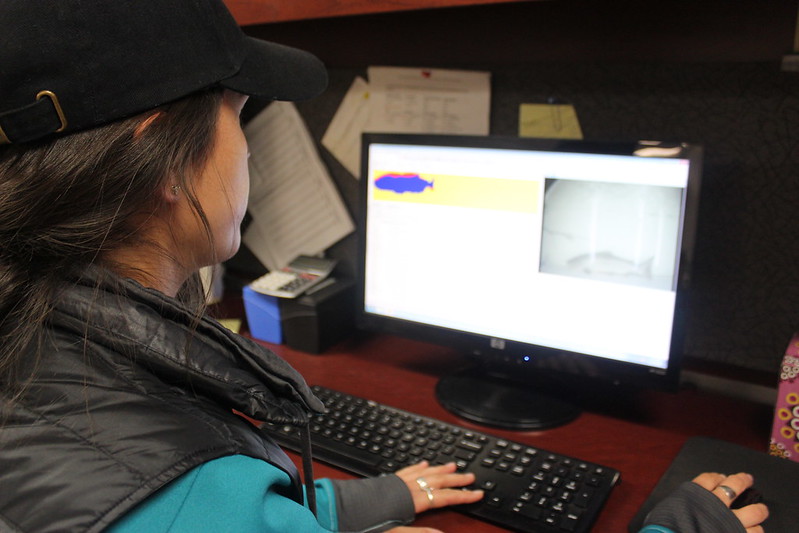
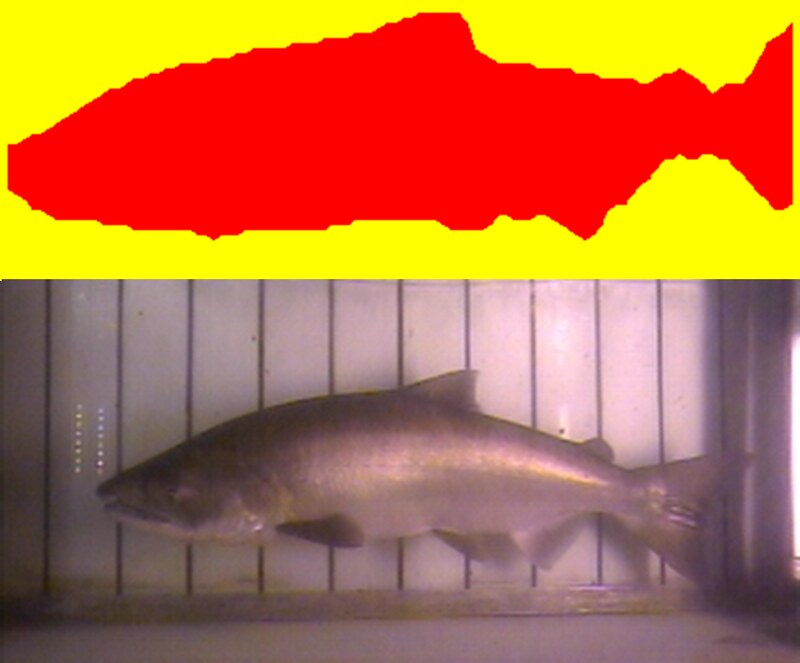
The Simsonar FC is also triggered by floating debris, but its software classifies the passing object as something other than a fish, saving time during data processing. Simsonar software comes equipped to identify common Scandinavian fish species, such as Atlantic salmon, Arctic char, grayling, whitefish, and the increasingly common non-native pink salmon. Fish are automatically identified as one of these species or classified as “unknown” until enough fish passages are captured and recategorized to the correct species by a technician. Ideally, the neural network software should be trained on 1,000 or more images to confidently identify a new species, and our staff is working with Simsonar to sequentially add Central Valley species to the software’s repertoire. After that, a technician only needs to verify that each fish was correctly identified by the software. Specific to salmon, the software is also programmed to detect the presence of an adipose fin (a missing adipose indicates hatchery origin).
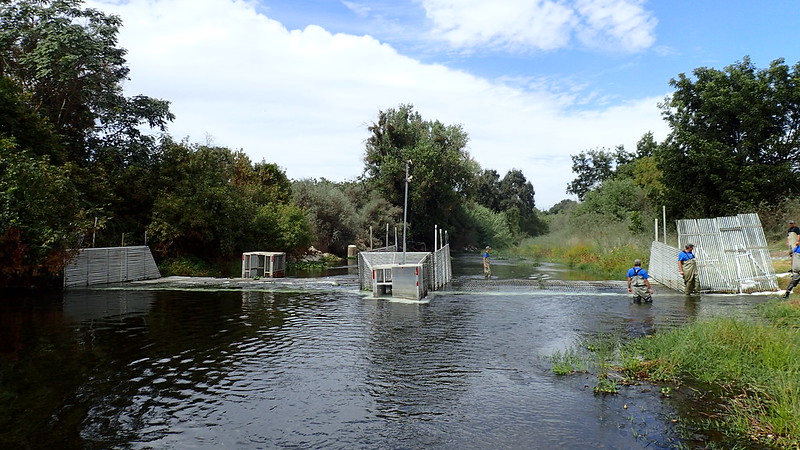
The 2024 Chinook salmon migration was the first season that FISHBIO used the Simsonar FC and software as the main fish counting system at the Tuolumne River weir, with the Riverwatcher serving as a backup and validation tool. Initial results show that the Simsonar FC detects most fish moving through the weir but will benefit from additional calibration, as some fish were not counted or misidentified. The Simsonar FC cannot identify fish in very high turbidity, an obstacle that may necessitate continued reliance on infrared scanners. Currently, our technicians still review and validate the presence of an adipose fin, check if multiple fish entered the passage simultaneously, or if a fish entered and then turned back downstream.
Despite the need for continuing refinement, the Simsonar FC is a cost- and time-efficient alternative to other methods of tabulating fish passages. With ongoing improvements in the accuracy and efficiency of artificial intelligence software, we look forward to further integrating this technology into our fisheries monitoring operations.
For inquiries about the Simsonar Fish Counter, please contact us at info@fishbio.com
Header Image Caption: Simsonar fish tunnel being prepared for installation. This post was featured in our weekly e-newsletter, the Fish Report. You can subscribe to the Fish Report here.
